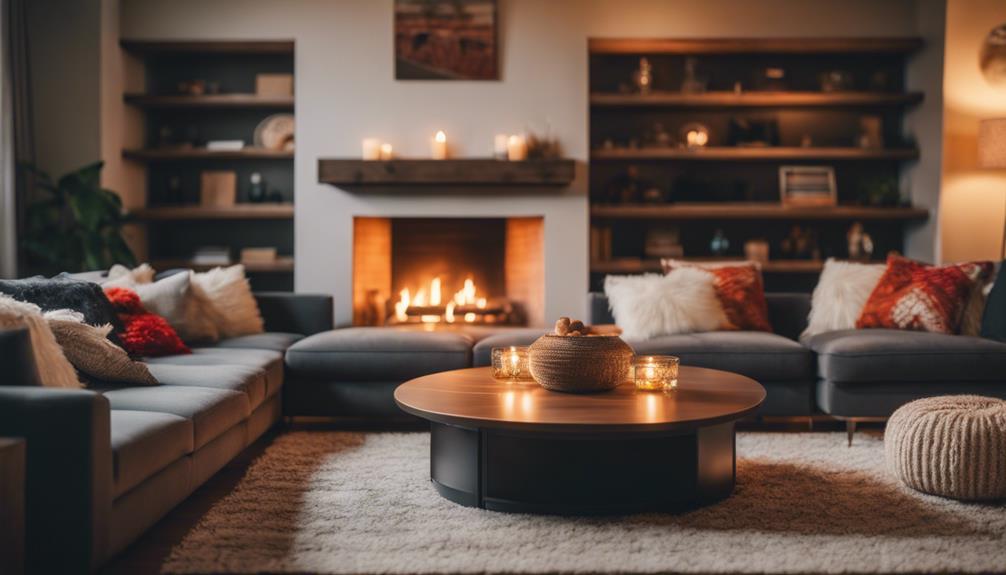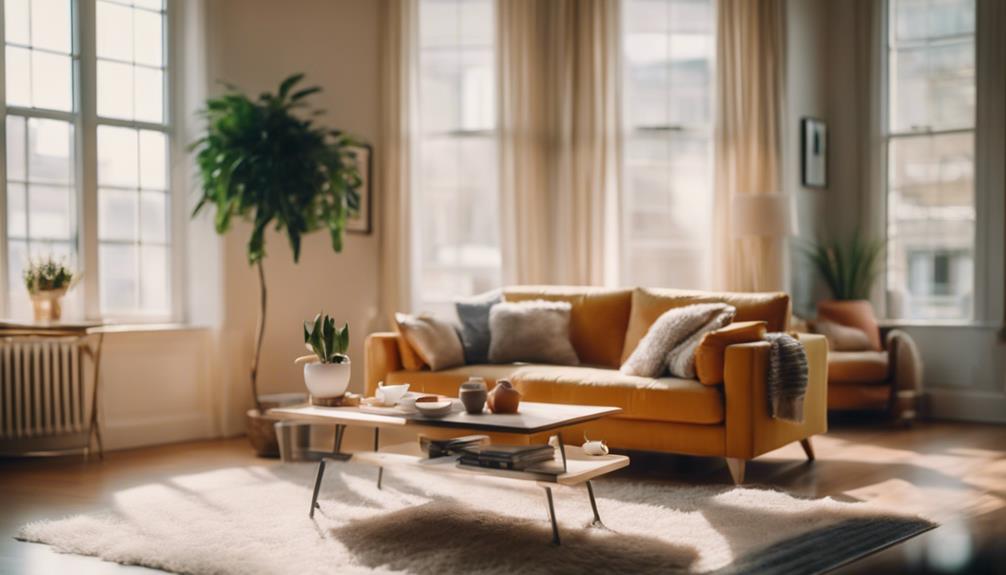In order to make your living room layout more functional, start by analyzing the room’s measurements and characteristics. Find a central point of focus, such as a fireplace or large window, and arrange your furniture around it to establish conversational areas. If your room is slender, move the furniture slightly away from the walls to create a sense of spaciousness. In wider areas, position your sofa in the middle and use area rugs to delineate different zones. Maintain a cohesive decor style and incorporate personal touches to create a cozy atmosphere. Try out different arrangements until you achieve a layout that feels right. There are many more factors to consider in order to enhance your design and craft a space that you truly adore.
Key Takeaways
- Identify and emphasize a focal point, such as a fireplace or a large window, to create a sense of purpose in the space.
- Experiment with furniture arrangements, pulling pieces slightly away from walls to enhance openness and encourage conversation.
- Use area rugs to define functional zones, especially in combination spaces, to create visual separation without physical barriers.
- Incorporate vertical storage solutions like tall bookshelves to maximize space and draw the eye upward, creating a more spacious feel.
Understanding Your Living Room Layout

Understanding your living room layout is essential for creating a space that feels both functional and inviting.
Start by evaluating the room's dimensions and identifying any architectural features, like windows or doorways. This helps you visualize how to arrange furniture effectively.
Next, think about how you use the space—do you entertain guests, watch TV, or read? This will guide your furniture choices.
Begin with the largest pieces, like sofas, placing them on a long wall to establish flow. Make sure all decor complements each other to avoid a cluttered look.
Identifying Focal Points
Every living room benefits from a defined focal point that draws the eye and anchors the space.
Start by identifying the most prominent feature in your room, like a fireplace, a large window, or a TV. Once you've pinpointed this focal point, arrange your furniture to emphasize it. For instance, position seating around the focal element, creating a conversational area that invites interaction.
Avoid cluttering the space with too many competing elements; instead, let your focal point shine. If your room lacks a natural focal point, consider adding one, like a piece of artwork or a statement piece of furniture.
This simple adjustment can transform the entire atmosphere, making your living room feel more inviting and cohesive.
Maximizing Space in Narrow Rooms
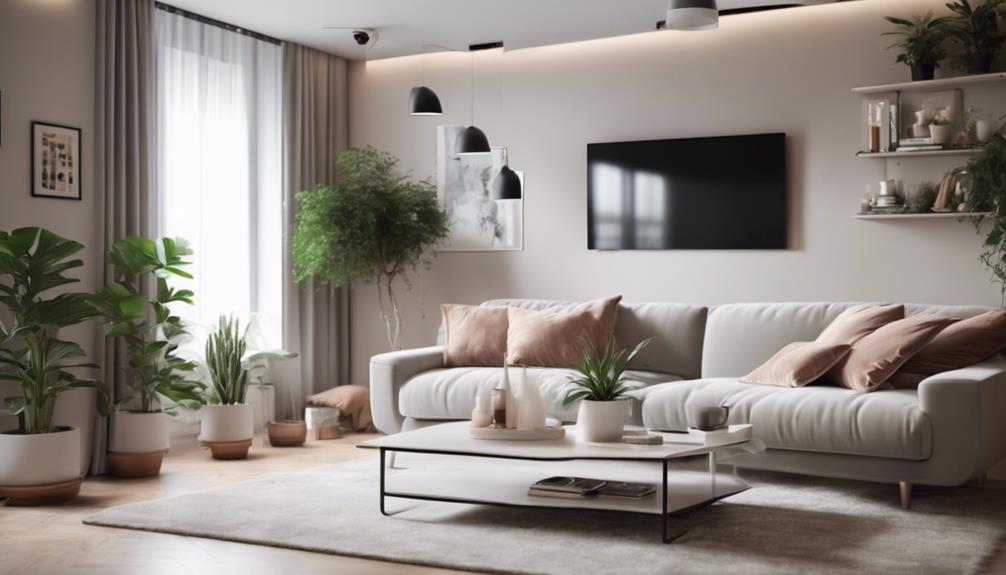
To maximize space in narrow rooms, pull furniture slightly away from the walls to create an open and inviting atmosphere. This simple adjustment enhances flow and makes the space feel larger.
Utilize vertical space by incorporating tall furniture like bookshelves, which draws the eye upward and adds depth.
Consider using curved furniture, such as round tables, to soften the room's lines and promote a cozy vibe.
Layering different textures with various materials can also add interest without overwhelming the space.
Strategies for Wide Rooms
When arranging furniture in wide rooms, a large sofa can serve as a focal point that effectively fills the expansive space while promoting comfort and conversation.
To enhance the layout, define distinct areas using area rugs. This not only creates functional zones but also adds warmth to the room.
Consider floating your furniture away from the walls, which fosters intimacy and encourages interaction.
Don't shy away from bold accents; colorful pillows or artwork can break up monotony and add character.
Finally, incorporate functional accessories like large plants or eye-catching art pieces to fill empty spaces, ensuring your wide room feels cohesive and inviting.
With these strategies, you'll transform your living area into a stylish and welcoming retreat.
Designing Combination Spaces
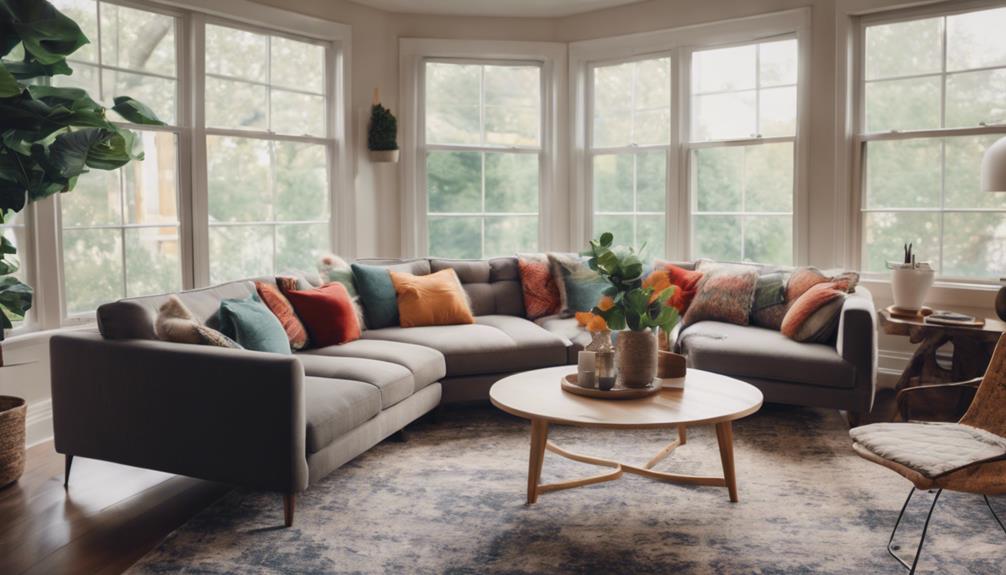
Designing combination spaces requires a thoughtful approach to create harmony and functionality in areas that serve multiple purposes.
Start by choosing a unified color palette to tie the different zones together, making the space feel cohesive.
Use visual dividers like bookshelves or sofas to delineate areas without completely separating them.
Opt for dual-purpose furniture, such as storage ottomans or extendable dining tables, to maximize utility.
Position larger pieces strategically to guide movement and maintain flow between sections.
Finally, incorporate area rugs to visually separate living and dining spaces, creating distinct decorative zones.
General Arrangement Tips
Arranging your living room effectively often requires balancing functionality with aesthetics to create a welcoming atmosphere. Start by prioritizing functionality; think about how you'll use the space.
Experiment with different layouts to discover what feels right. Don't hesitate to pull furniture away from walls, as this can enhance openness and flow. Incorporate varied lighting sources to brighten the space and highlight key features.
Personal touches, like photos or art, can infuse warmth and character into your arrangement. Consider seeking expert help if you're facing challenges with a tricky layout.
Ultimately, the goal is to create a space that feels both comfortable and visually appealing, making it a true reflection of your style and needs.
Enhancing Ambiance With Decor
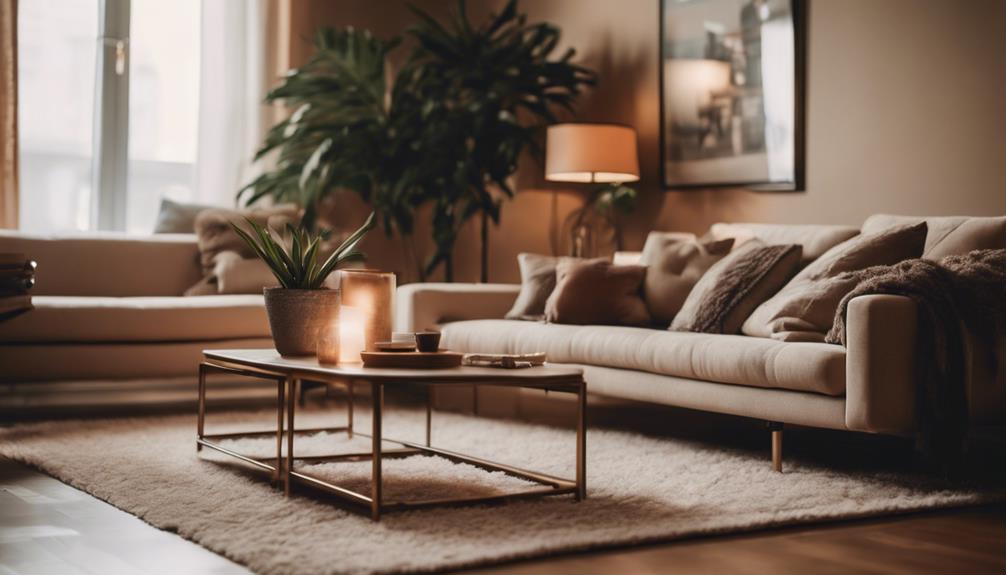
To elevate your living room's ambiance, focus on selecting decor that resonates with your personal style and complements the overall design. Thoughtful decor choices can transform your space from awkward to inviting. Consider layering different textures, such as soft throws, plush pillows, or woven baskets, to create warmth.
Use artwork that sparks joy or conversation to add character to your walls.
Incorporate plants to introduce a lively, fresh element and improve air quality.
Choose lighting fixtures that not only illuminate but also serve as stylish focal points.
How Can Smart Furnishings Help With Awkward Living Room Layouts?
Finding the right furniture to complement an awkward living room layout can be a challenge. Smart furnishings, designed to maximize space and functionality, can help transform your workspace furnishings. From modular sofas to adjustable coffee tables, these pieces can adapt to various room configurations, making the most of your living space.
Can the Techniques for Creating a Zen Oasis in the Bedroom also be Applied in Awkward Living Room Layouts?
Looking to transform your bedroom oasis techniques to an awkward living room layout? Absolutely. Utilize calming colors, minimalist furniture, and natural elements like plants to create a serene atmosphere. Maximize space with clever storage solutions and consider rearranging furniture to improve flow. With some creativity, you can achieve a peaceful retreat in any space.
How Can Conference Room Design Concepts Be Applied to Awkward Living Room Layouts?
When dealing with awkward living room layouts, consider revolutionizing conference room collaboration by applying the same principles. Utilize modular furniture for flexibility, incorporate smart technology for connectivity, and utilize strategic lighting for a welcoming ambiance. Experiment with different layouts to find the most functional and aesthetically pleasing arrangement.
How Can I Transform My Awkward Living Room Layout to Make the Most of the Space?
When dealing with an awkward living room layout, incorporating small bedroom furniture layout techniques can be beneficial. Utilize multifunctional furniture pieces, such as ottomans with storage or a sofa with a pull-out bed, to maximize space. Consider arranging furniture in a way that creates designated areas for different activities, such as conversation or relaxation.
Conclusion
By embracing your living room's unique layout, you can create a space that feels just right for you.
Did you know that 80% of homeowners report feeling happier in well-designed living spaces?
With thoughtful arrangement and personal touches, you can transform your awkward room into a cozy haven.
So go ahead and release your inner designer—your ideal living room is within reach.
Enjoy the journey of making your space a true reflection of your style and needs!
